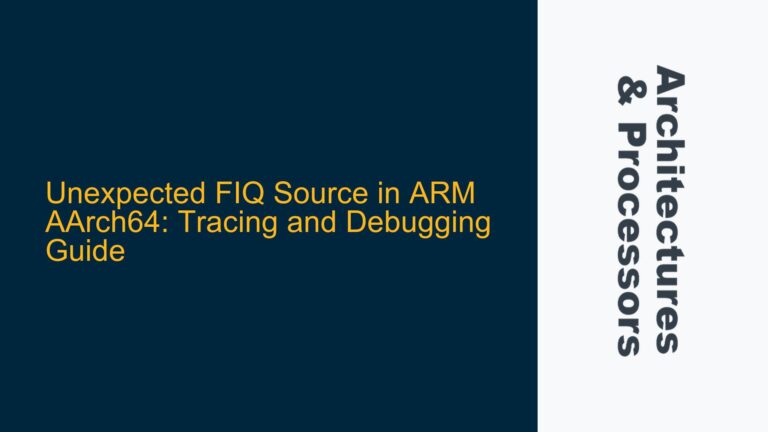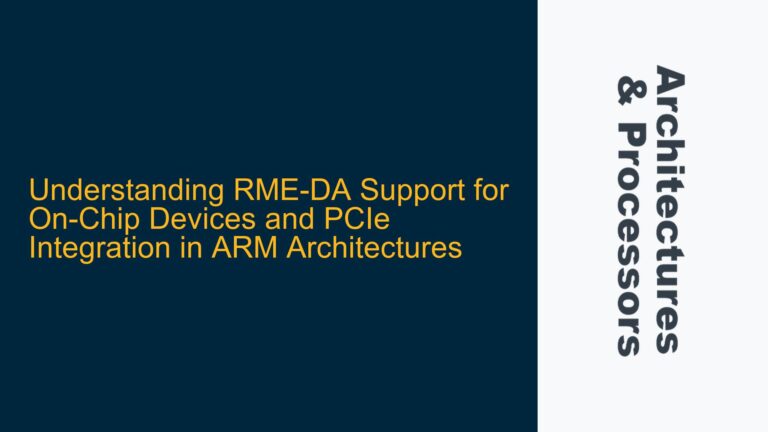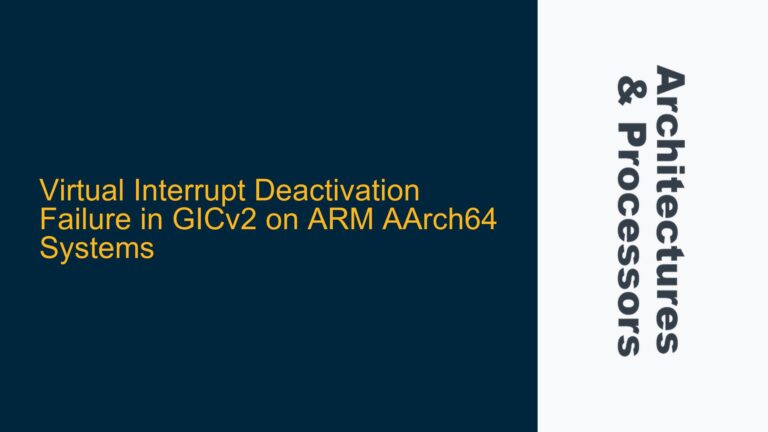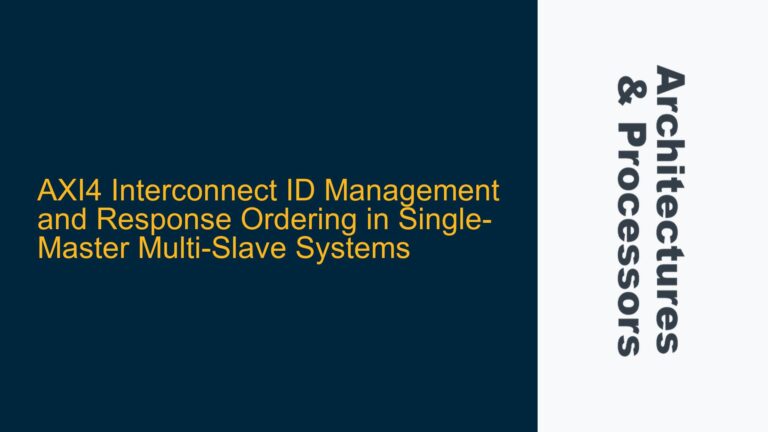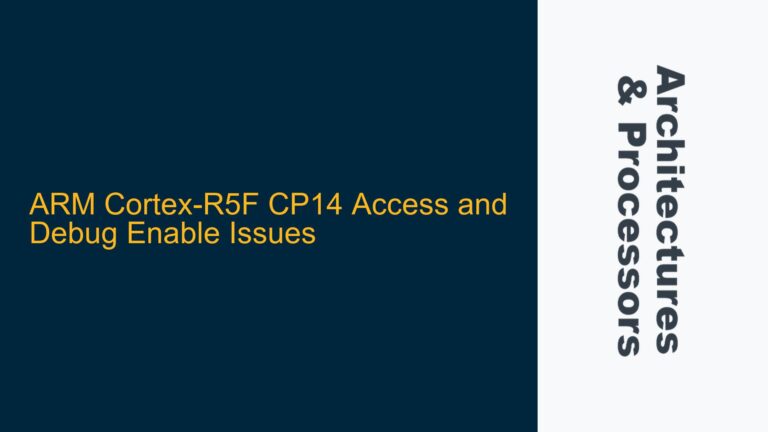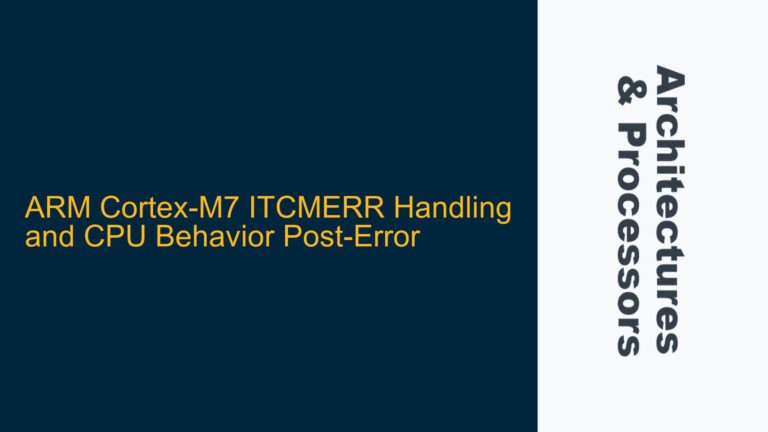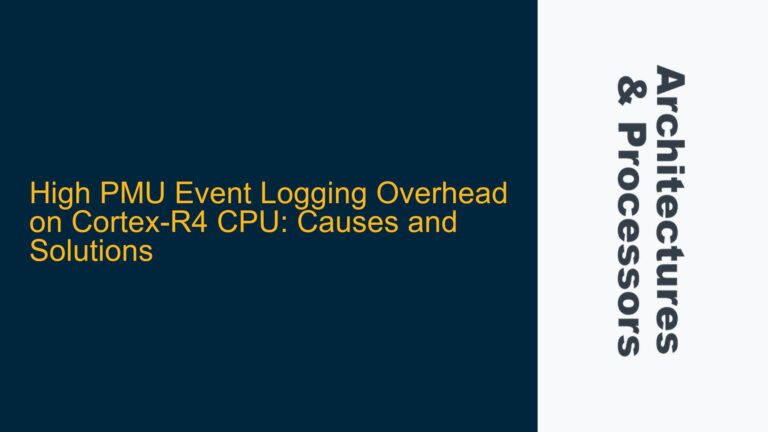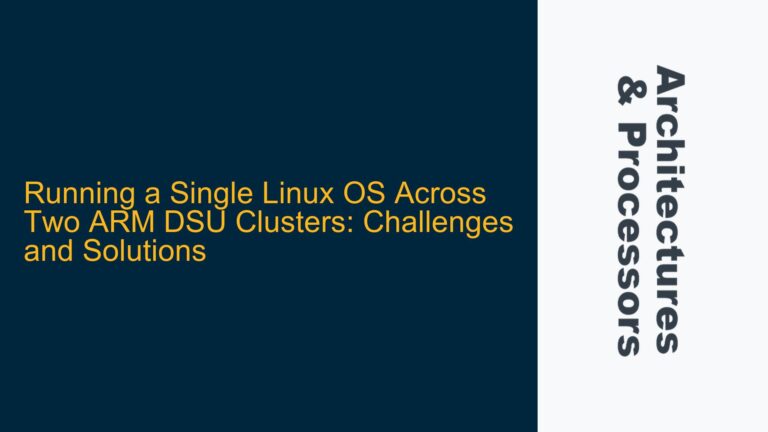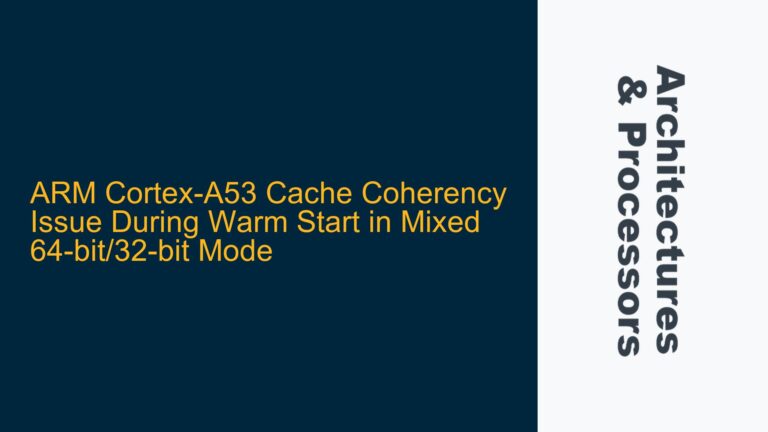Unexpected FIQ Source in ARM AArch64: Tracing and Debugging Guide
ARM Cortex-A FIQ Exception at EL3 Without External Interrupt Signal When working with ARM Cortex-A processors in AArch64 mode, encountering an unexpected Fast Interrupt Request (FIQ) can be a challenging issue to debug, especially when no external interrupt signal is asserted. In this scenario, the Program Counter (PC) jumps to the FIQ vector table entry…
